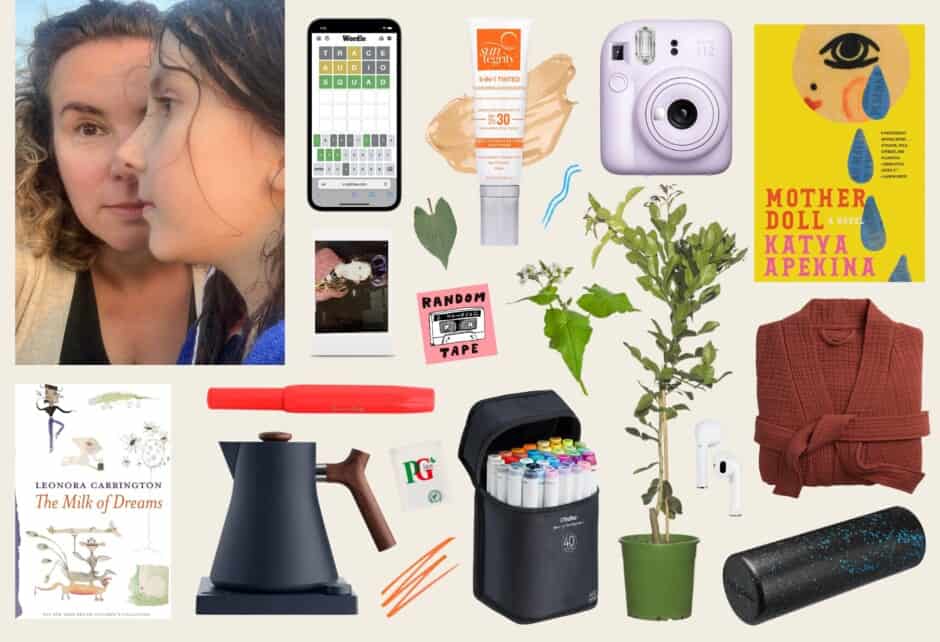
HOW TO NAVIGATE EDUCATION ON & OFFLINE DURING A PANDEMIC
Written by Children & Screens
Photography by Photo Courtesy of Children & Screens
Today’s advice on back to school 2020 comes from the folks at Children and Screens, a non-profit dedicated to advancing scientific research around the impact of technology on children, as well as educating the public and advocating for public policy for children’s health and wellness.
This year’s “back-to-school” looks very different for families grappling with the pandemic. While some students will return to in-person learning, many will take their classes online or participate in a hybrid model that mixes virtual education with in-person attendance. Each scenario comes with its own set of challenges, opportunities, and anxieties. With this in mind, we’ve brought together an interdisciplinary group of leading educators, researchers, and experts to provide these useful tips for making the most of the 2020-21 school year, however it may unfold.
Parents may feel tempted to exclude their children from conversations about these decisions, says Jackman, but it’s important to communicate with them. “Regardless of your child’s age, having developmentally appropriate conversations about school options will give you insights into what your kids already know and want,” she explains. Jackman recommends starting the talk with broad, open-ended questions (e.g., What have you heard about school?), and asking their opinion as the conversation progresses (e.g. What is your preference for back-to-school?). “Let your kids know that you value their opinion and that you’ll keep the conversation going,” she adds. “Remember, this will take more than one conversation…so, keep talking.”
Limiting uncertainty is a great way to reduce anxiety for children. “As your child returns to school, work with them to create a schedule,” says Lisa Nielsen, Senior Director at the NYC Department of Education’s Office of Digital Inclusion. “Discuss how their day might look, talk about the flexibility of it, and communicate how you’ll revisit your schedule together in the future to see if it’s working or needs to change.” Nielsen also recommends having a backup schedule ready to go in case in-person students have to return to learning remotely.
“Remind your children that it’s safe for them to vent to you,” adds psychologist, author, and teacher Collett Smart. “Limit worry time to a specific part of the day, and gently challenge unhelpful thinking, like the ‘what ifs.’” Smart reminds parents that it’s important not to minimize what their children are feeling, and suggests avoiding excessive reassurance. “Instead,” she says, “focus on highlighting times that they’ve shown courage.”
Back-to-school 2020 is likely to bring unprecedented levels of anxiety for some children (and many parents). Dr. Charmain Jackman suggests giving children the tools and vocabulary to manage their anxiety through mindfulness strategies. “Apps such as My Life (all ages), Breathe, Think, Do with Sesame Street (younger children), and Mindful Powers (tweens) make mindfulness fun and engaging,” she explains. “Practice along with your children, and you’ll learn some skills, too.” In addition to apps, Jackman recommends reading books that help children name and express their emotions. “These tools will last your child a lifetime,” she says, “and will prepare them for the uncertainty of the new school year.”
In the classroom, teachers set up norms and expectations at the beginning of the year. Lisa Nielsen recommends parents do the same for the digital realm at home. “Discuss the norms for your child’s classes to gain insights into their learning,” she suggests. “This will also help the teacher by reinforcing the expectations of your child.”
With the increased reliance on digitally infused education this year, Nielsen adds that maintaining good posture is essential for the physical wellbeing of both parents and students. “Look up, stand up, stretch, and walk around several times a day,” she says. “Position the top of your monitor just below eye level and sit up straight, keeping your head level without bending it forward.”
“Given that so much instruction will be online this year, parents should do everything they can to ensure their kids are active in the real world,” says UCLA Distinguished Professor of Education Pedro Noguera. “Get them outside by promoting physical activity or taking them on field trips to parks or interesting historical sites. Encourage them to develop hobbies, write in journals, and read books (The American Reading Company has an excellent leveled selection, and a particularly good one for Black boys). Talk to your kids about their experiences with online learning and listen closely to what they have to say.”
Structured screen breaks are a crucial part of ensuring wellbeing for both kids and adults, adds Campaign for a Commercial-Free Childhood Executive Director Josh Golin. Golin suggests celebrating Screen-Free Saturdays as a family. “Kids will complain a lot less about screens going off when they see their caregivers leading by example and available for offline fun,” says Golin. “And a break from the constant noise of the news and social media will help parents recharge for the many challenges of the week ahead.”
According to Sonia Livingtstone, PhD, author of Parenting for a Digital Future: How Hopes and Fears About Technology Shape Children’s Lives, it’s not the amount of time children engage with screens that matters so much as the quality of that engagement. “First, consider the context,” she explains, “are your kids engaging with a screen to avoid their schoolwork, or to relax because they’ve completed it? What are your children watching? Do you think it has value? Lastly, consider the social connections: are your children using technology to sustain valued relationships, or not?”
It’s safe to say that this school year will be unlike any other, which means it’s important for families to be patient, adaptable, and empathetic. Whether your school has returned to in-person education, is shifting fully online, or is somewhere in-between, parents need to make time to communicate honestly and openly with their kids to help ensure that they’re getting the most out of their education. While it won’t always be easy, it will always be worth it.
For a more in-depth exploration of the challenges and possibilities of heading back to school this year, tune into the next installment of Children and Screen’s weekly “Ask The Experts” series on Wednesday, August 26, at 12pm ET via Zoom. The seminar will feature an interdisciplinary panel of experts answering questions and sharing guidance for families working to adjust to the new normal, engage with their kids, and bridge the distance between students and teachers. RSVP here. More tips about at-home learning are available at childrenandscreens.com.
Share this story



